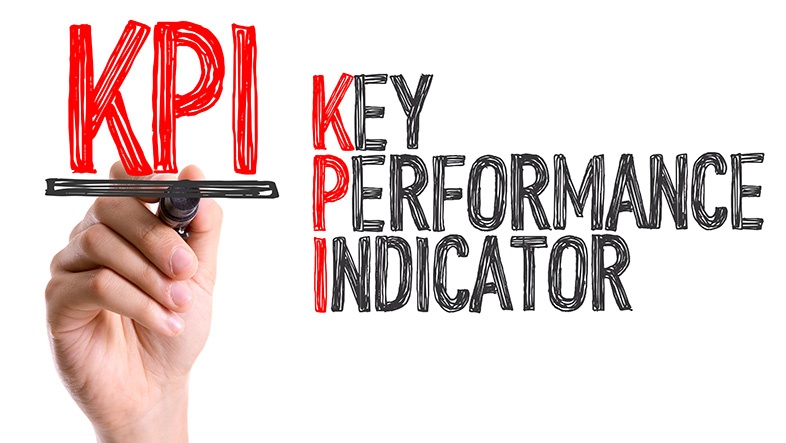
Why is growing a small business so difficult? According to the Small Business Administration, about one-third of small businesses fail within the first two years. But why?
If I had to summarize The E-myth by Michael Gerber in my own words here is how I would phrase it: Just because you are good at something and you are passionate about it does not mean you will be good at running a small business.

I often get approached by people (typically friends or people referred to me) that want advice on starting a business in some area that they are super passionate about.
I often give them my summary of the E-myth listed above and then ask them if they have read it. If they say no I tell them to buy a copy (or come borrow mine) read it and then call me back.
The next step is typically looking for a shortcut. Isn’t there an easy way? A quick fix of sorts, or cliff notes to running a successful business. So, that got me to thinking; how can I oversimplify small business growth? The answer is simple: strip it down to the very basics.
Below I give you my best shot at oversimplifying how to grow a small business.
Please do not misinterpret the word oversimplifying here, this is not a short blog post. In fact, it is over 5000 words long.
Growing a small business is not simple. I use the word oversimplified because this could easily be a really long book. It was my intention to break down this complicated topic in as simple a manner as possible.
This is often where many businesses start a new department of marketing. The idea is that it is the marketing department’s job to attract new prospects and either qualify them or disqualify them
In a simplified manner, this would also be known as sales. The sales department’s main role is to take qualified leads from the marketing department and convert them to customers.
I would argue that the retention of customers is a job for both sales and marketing. In larger companies, you may even create a new role for the retention of customers. I’ve seen this role coined with fancy terms such as customer success manager, which to me is a fancy title for someone who is in charge of keeping clients happy. It is over 10x more expensive to bring in new customers than it is to retain current ones.
As a small business, you will most likely never have to worry about sales and marketing becoming misaligned. Often in larger
Then you get sales complaining that marketing is producing crappy leads and marketing complaining that sales
Just be sure that you understand what your ideal customer wants and that you are focused on attracting them to your business and converting them to a customer.
Sales
Good salespeople have a great product or service that actually solves a customer’s problem; sales isn’t about tricks it is about helping others.
In today’s world, the customers have so many choices and the ability to do lots of research before making a purchasing decision.
Companies that want to sell need to focus on helping their customers solve a very specific problem.
The next step in small business growth is business organization and structure. Do you want to remain a one-person business or do you want to build a team? Which positions will you hire in-house and which will you outsource? What type of culture do you want to create? What is the vision, mission and core values of the business?

I often ask business owners if they have their vision, mission, and core values written down. I typically hear one of two responses:
1) No, because that is for big corporations and we are a small business.
2) Yes, somewhere. We developed it a long time ago and it is written down somewhere.
Honestly, when I first started our business, my attitude was more in line with the #1 response above. So why is having a vision, mission, and core values written down so important?
Let me answer that question with another question: How can you become a successful business if you don’t know what you do (mission), where you want to go to feel successful (vision), and your beliefs as a company in the way you operate (core values)?
The question I can’t answer for you is whether you should remain a one-person business or hire a team. My best advice is to “start with why”, as Simon Sinek would say.
Why is it that you are in business? What is your overall goal? Is it money? Fame? Free time? Or something else?
I’ve heard solopreneurs yearn for employees and those that grew a team tell me it was their biggest regret. Like I said, I can’t answer it for you.
Let’s assume that you want to build a team…
Company culture matters to the success of your business because it sucks working with people that don’t truly align with your culture.
While we consider many factors when hiring, I can assure you that culture fit is one of our top three considerations.
Another important thing to understand about culture is that it can only be influenced but not completely controlled. Unlike a vision or mission statement you really can’t write down your company culture and force it upon employees.
Your company culture will develop based on the way that you influence it, but it will also constantly be changing as your business evolves.
Even if you are a one-person company, you should develop a working organizational chart right away.
Having an organizational chart if you are the only employee seems silly, doesn’t it? Let me explain why I think it is important and how you can use your org chart to grow.
When you first develop your organizational chart try and break the various positions into groups of different tasks that you do. Eventually, you will probably come up with some sort of general segmentation that mimics a typical small business org chart. You will probably have executive tasks, sales, marketing, HR, and operations just to name a few of the basics.

When it is just you in the organization you have no choice but to put your name on every position, and that is ok for now.
Having a working org chart in place can help you visualize future hires and develop company strategy.
As you grow your small business one thing you will have to get good at is delegating tasks.
You will soon realize that there is no way you can continue to grow
A good way to start delegating tasks is to make a list of all the tasks that you do on a daily, weekly, and monthly basis. Then separate the list into two categories: to do and tasks to delegate.
I have always found Tim Ferriss’ decision making workflow a valuable tool in deciding which tasks to put on my action list, those to delegate, and those to eliminate.
As your list of tasks to delegate grows you will start to be able to sort it into different categories. Those tasks will help you identify positions on the organizational chart that you want to hire for.
You can use then use the list to develop job descriptions and to create a hiring plan. Then you are ready to move on to the next step of hiring employees.
When I first started hiring employees I underestimated both how difficult it is, as well as how important it is. I just figured that people would want a job and I had a job for them. If only hiring could be that simple.
Some of the major mistakes that we made when we were hiring were paying people part-time hourly and not offering benefits. With that
We also didn’t consider the importance of cultural fit enough. Lastly, we didn’t invest enough time or money into employee development through training (both internal and external).

So, how do you hire employees the right way? By no means am I an expert in this area, but we have worked extremely hard at trying to understand hiring and to improve our skills.
One of the best resources we found during our quest to get better at hiring was a book called Who by Geoff Smart and Randy Street. This book was by far the most valuable resource we have come across in trying to get better at hiring.
Many of the tactics that are presented in Who we still use today, exactly as they laid it out. This includes both a process and specific questions.
Let's look at company culture as a way to attract employees. People like to work in environments that they are comfortable in. Comfort means different things to different people.
Some people like a casual dress code and others like to dress up. Some like flexible hours and others need a rigid schedule that they can stick to.
Some will like a laid-back management style, while others will need a more competitive environment.
I want to stress the importance of cultural fit when hiring. It’s really nice to go to a work environment where people truly mesh and are aligned with the goals of the company.
Just one bad cultural fit can throw the organizational equilibrium off. However, assessing cultural fit during the application and interview process is extremely difficult.
Another thing to consider when trying to attract top talent is your compensation package, and I’m not just talking about money. You also want to consider such things as benefits packages and other perks like casual dress codes and flexible schedules.

Certainly, you want to look at what the competition is offering, but you don’t want to just copy them. You need to differentiate your company from the competition in some way.
When thinking about compensation packages think about two things: Could you work here? (financially etc.) and would you want to work here? (benefits and extra perks).
Developing a hiring process is extremely important. Although I'm not an expert, I'd say that you definitely want to come up with a solid process for when you need to find top talent.
You can start with a solid job description for each position. My advice is to do something different than everyone else.
Go do a job search for some random job, take accountant for example. All the titles are the same: GL Accountant, Senior Tax Accountant, General Accountant etc. Pretty boring, right?
If you're going to attract the best talent, write something different and exciting. It is a candidate's first impression of your company culture.
Next, make sure you have a specific interview process that you follow.
Some larger and more competitive companies will have a very long and rigorous interview process. I would say, in general, small businesses tend to have 2-3 interviews for an open position. Just make sure you have a process in place with a list of specific questions for each interview.
Understand what type of position you're hiring for and decide if the way you're interviewing matches the job. For instance, if the job is for an entry-level position doing overnight maintenance, 3 interviews might be a little overboard, don't waste the time. But do you think you should be hiring the new CFO with an interview over the phone?
Lastly, I want to talk about selling employees on your company. This tip comes straight from the book Who. Many companies go through the interview process, find a candidate that they love, make them a job offer and then stop and wait. The authors of Who, Smart and Street, point out that this is a huge mistake on the employer’s behalf.
Much like customers, employees need to be sold on your business. They want to know why you are the place that they should work. When trying to sell a candidate on coming to work for your business Smart and Street recommend that you focus on the Five F’s: Fit, Family, Freedom, Fortune, and Fun. Below are my personal very raw notes:
Most managers fail to sell a candidate on the business and job itself.
Sell the candidate on what they care about.
Candidates tend to care about 5 things:
1. Fit
Ties companies vision, needs, and culture to candidate’s goals, strengths and values. Here is where we are going as a company and here is how you fit in.
2. Family
What can we do to make this change as easy as possible for your family?
3. Freedom
Give freedom to make decisions and not micromanage.
4. Fortune
If you accomplish these goals you will make this over the next 5 years.
5. Fun
We like to have fun hopefully you enjoy the culture.
Remember, your job of hiring talent doesn’t stop until the employment contract is signed. Sending a job offer and waiting for a response is not a good approach. Make sure that you sell the candidate on working for your business throughout the hiring process.
Retaining top talent in your organization – If you are going to invest a lot of time and money into finding and acquiring top talent for your business, then it just makes sense to do everything in your power to retain that talent.
Another way to retain top talent is to help your employees achieve their career goals. Getting clear on your employees’ actual goals is the challenging part.

We have found a few tools that have helped us with understanding employees’ goals:
There are plenty of people that will tell you that personality assessments are a waste of time when hiring. Typically, we don’t use them as a deciding factor when making a hiring decision.
Instead, we like to use them to learn as much as possible about the candidates that we are considering hiring.
The personality assessments have helped our company in a lot of different ways. First, we are able to further validate that we have the right people in positions on the organization chart that make sense and are good natural fits.
We have also been able to better understand the natural style of each employee and what motivates them.
Lastly, we have information on the most effective way to communicate with each individual employee; essentially the do’s and don’ts when engaging an employee in a difficult conversation.
![]() TinyPulse is another tool that we have been using internally that has benefited the employees, our culture, and our business in general.
TinyPulse is another tool that we have been using internally that has benefited the employees, our culture, and our business in general.
With TinyPulse we are able to send one question to our staff on a weekly basis. All answers and elaboration by employees are completely anonymous.
I was hesitant with TinyPulse at first so I started with a free two-week trial. After the first week, I called our sales rep with my credit card in hand gladly willing to sign up. I was able to see the value right from the beginning with TinyPulse.
We were able to engage in a conversation with an employee in an anonymous setting about why they were unhappy at work. Without this tool, I don’t think we would have ever known that we had an unhappy employee because we don’t know if the employee would have approached us.
At the end of the day, we were able to retain our entire staff, morale increased, and we saw a positive impact on our company culture.
We try and do a lot of things to make sure we create a work environment that is comfortable and open to communication. We have informal employee development meeting’s monthly followed by formal quarterly meetings.
We try and do employee events and lunches to discuss items freely. However, sometimes that just isn’t enough. TinyPulse has given us another avenue to communicate with employees openly and get real, honest feedback.
And now we get to the fun stuff…business strategy. With this specific category, considering how large it is, what I will aim to do is give you an overview of a strategic planning process that you can use to help you develop, analyze, and implement a business strategy.
There are so many small businesses out there that don’t even know what they truly are. What I mean is, when a founder starts a small business they typically skip the basics of planning because there is an urgency to make sales.
Believe me, I get it, sales are important, especially when the clock is ticking and you either need to make your business work or go look for a job again.
It is important to understand your small business from a fundamentals level. Things like a vision, mission, and company core values may seem ridiculous when you are small but they are critically important when it comes to growing a business.
Understand what your business is now, where you want it to go, and the values you hold true
When you go to scale your business having this information readily available, in an easy to understand format will prove invaluable.

It is imperative that you be innately aware of the market that you operate in at all times. Why is this so important? Because your market will change. In fact, the market you operate in is always in flux.
In order to succeed in the market, you must be aware of what is going on and make sure that your strategy will position you to come out on top.
Let me give you a few real-life examples of why market awareness, particularly industry disruptors, is so important. Do you think the general taxi operator saw Uber coming? Take your everyday Joe taxi cab driver.
Even if he or she had heard of Uber do you think they would have had the awareness to understand the impact it would have on the industry? Uber was an industry disruptor that crippled anybody that didn’t believe in them or see them coming.
Now let’s look at the accounting industry because it is one that I know since we operate in that market. Advances in technology have already had a huge impact on the accounting industry, but artificial intelligence will disrupt the accounting industry.
I am aware of that fact and I believe it. So, what do I do, give up? I intend to take that information or belief and make the proper adjustments in our business model to succeed.
You see, accounting and bookkeeping used to be about entering data for clients to create meaningful reports. Software and technology have changed everything about bookkeeping and tax returns.
Technology is transforming the accounting industry into a consulting industry. The data entry side of the business is dead and everyone knows it.
Some accountants are making the proper adjustments, but many are not because they are in denial. Those that don’t adapt and adjust will become extinct.
Many accountants view the advances in technology as a threat because they think it will eliminate their jobs. They are right, it will eliminate their current jobs. What they need to do is adjust with the market.
Instead of viewing technology as a threat they should be looking at it as an asset that can make them more productive.
Being in tune with your market and remaining brutally honest with yourself will help you adjust and win.
In order to define opportunities for your business you need to combine the above two steps; an intimate understanding of your business and market awareness.
As a business owner, nobody should understand your business better than you. And if you are any good at running your business you should have a pretty solid grasp of your specific niche industry and what is happening within it.
Now you have to be brutally honest with yourself when identifying new opportunities. If there is a major disruption coming to your industry that you know will impact your business the worst thing you can do is ignore it.
Business owners are often quite good at identifying threats to their business. However, when it comes to opportunities they struggle.

Instead of identifying a threat and then getting negative, spin it around and try and figure out how to turn that threat into an opportunity. How will it impact your business? What new opportunities might it open up for your business? By looking at threats from another angle you will soon turn those threats into opportunities.
Don’t ever get too comfortable with your business strategy because your industry is constantly changing. Instead, always be looking for new opportunities that you can make strategic pivots within your business to take advantage of and become an industry leader.
Once you have developed a rough idea of a few opportunities within your business you will have to figure out which to pursue and which to discard. You may analyze your opportunities and decide none of them
On the other hand, you may find that several are worth implementing. Don’t be discouraged either way, just be happy you are going through the correct process of making an informed decision.
The formal strategic planning process is quite involved and detailed. I’m going to do my best to simplify the process into resource mapping and financial analysis.
Resource mapping can be a very powerful exercise when analyzing a potential growth opportunity for your business.
The basic explanation of resource mapping is: what do you have, what do you need, and the associated action step and timeline for each item.
You should break the resources of your business into 6 basic categories:
Resource mapping will help you identify the key things you will need to pursue your opportunity, which can all be reflected
Lastly, and probably most importantly, is the financial analysis of your growth opportunity. You need to take all of the information from your resource mapping to develop a forecast for your opportunity.
Your forecasts should be analyzing at least three things: profit and loss, balance sheet, and cash flow.
When developing your forecasts, I suggest being conservative. So, what does that mean?
I personally would recommend underestimating sales and overestimating expenses. That does not mean that you should not try and be accurate. You should forecast as accurately as possible, but also be conservative. That way you won’t be setting unrealistic expectations.
Fine tuning, discarding, or implementing strategy – After you have created realistic forecasts for your opportunity it is time to analyze them and make some decisions.
Is the bottom line (profit) worth the time and investment? Is it too risky for the return? Do you like what you are seeing? Do you feel the market will truly accept your idea?
Smart business owners don’t just think of ideas and automatically implement them to see if they will work. Few entrepreneurs have the time or money to implement every idea they think of. Therefore, they must perform an analysis to determine which ideas are worth implementing.
As you analyze each opportunity you need to decide if you need to modify it, discard it, or implement it.
Too many people get stuck on
It is really important to track your small business financial data and monitor key business metrics for your business. Many business owners get so focused on growth that they fail to track and analyze profitability.
I’m a big supporter of focusing on sales, especially when you are a new company, but you need to make sure you have the proper system in place from the beginning to track your business finances.
Put a bookkeeping system in place for your business while it is still small and simple. While it may seem silly to worry about accounting when you are a small startup you will be glad with the decision as you grow. You will have a solid financial system in place which will support scaling.
.png?width=784&height=295&name=Untitled%20design%20(5).png)
Many business owners wait until it is much too late in the game to worry about accounting. The problem is they have no idea how much money they are making or spending and if they are even profitable.
The number one reason that businesses fail is because they mismanage their cash flow.
A solid bookkeeping system can not only help you manage your cash flow, but it can also help you make better business decisions.
Accounting and financial reports can be intimidating and incomprehensible to many business owners. If you don’t understand something in your business the worst thing you can do is ignore or neglect it.
Find a professional to help you with your accounting and financial reporting. Your bookkeeping is a valuable business tool that you can use to make better strategic decisions.
Why you should track key business metrics in percentages – I’ve always been a fan of running the business with percentage goals rather than whole number goals. When you run the business by percentages it makes scaling easier.
As an example, let’s talk about profit margins. The profit margin ratio is net income divided by net sales. To keep things simple let’s say a business has sales of $100,000 and a net income of $20,000, their profit margin ratio would be 0.2 or 20%.
If you have goals for profit margin and other key ratios it is easy to determine where you are performing well and where you are performing poorly.
When you run your business in percentages rather than whole numbers you can scale to any level and still quickly determine the health of your business.
If you see some of your KPI’s falling below your goals, then you know you are having issues that need your attention. Tracking KPI’s through ratios is a great way to quickly assess the health of your business.
The next logical question is how do you decide what key metrics to track
Is profitability important? Social impact? Job creation? Free time. There are all sorts of different KPI’s you could track depending on what is important to you.
Jesse Mawhinney, from Kula Partners, did a great explanation on HubSpot’s blog titled “How to Choose the Right KPI’s for Your Business.” In the article, he explains how to choose the right KPI’s based on your company’s growth stage as well as industry.
Since I am a professional service business owner I will focus that sector to give examples of KPI’s to track.

Effective billable rate – Jesse mentioned this KPI in his article and I totally agree with it. Many businesses, especially
Customer churn – Customer churn is often calculated incorrectly because you should not consider new customers. When calculating customer churn, you only want to consider customers you started with. So, if you are calculating the customer churn in a particular month you want to look at how many customers you have at the end of the month, but only from the list of customers that you started the month with. So, if you had 100 customers at the beginning of the month, how many of those 100 customers do you still have? Customer churn is helpful in measuring customer satisfaction and also price acceptance. If customer churn increases significantly compared to your normal churn you know you are having issues.
Profit margin – Profit margin is simply net income divided by net sales. For most service companies as you grow, you will expect to see your profit margins shrink. Profit margin is a good check on the health of the business.
Owner
Payroll percentage of sales – To calculate payroll as a percentage of sales simply divide your total payroll costs (including employer payroll taxes) by sales. This metric is extremely important in the service industry since payroll is typically the largest expense on your profit and loss each month. You can often find payroll percentage goals for your industry by doing some research or tapping your network in your industry.
Sales percentage increase from
The reason why KPI’s are so important to track is that they give you a quick way to assess potential problems as well as opportunities in your business.
By monitoring and analyzing key metrics on a regular basis you are doing a quick check on the health of your business. If you don’t track your finances and specific metrics you are essentially running your business blind.
A good bookkeeping system will track and report on your KPI’s, which will allow you to make better decisions and adjust business strategy as needed.
The reason I titled this post “Simplifying Small Business Growth” is
Horowitz really puts it eloquently when he says: “Hard things are hard because there are no easy answers or recipes. They are hard because your emotions are at odds with your logic. They are hard because you don't know the answer and you cannot ask for help without showing weakness.”
This is exactly how I feel about running a successful small business…it is hard.
So, to summarize things once again, here is how you grow a small business:
If only those tasks were simple.
Good luck!
Businessmen by trade, adventurers at heart; we understand the difficulties of running a small business and balancing a fulfilling life outside of work. We want to make the same thing easy for you. We offer day-to-day financial planning, personalized mentoring, and consulting services that will help you better understand the financial needs for your business and plan to meet your long-term goals.
Phone: (801) 216-3870
Email: sales@slcbookkeeping.com
159 W Broadway
Suite 200-138
Salt Lake City, UT 84101
Website designed by Inbound Design Partners